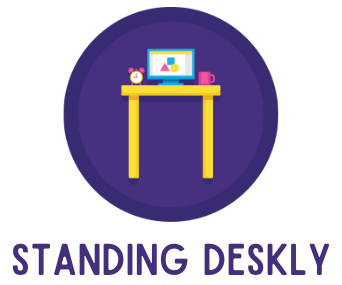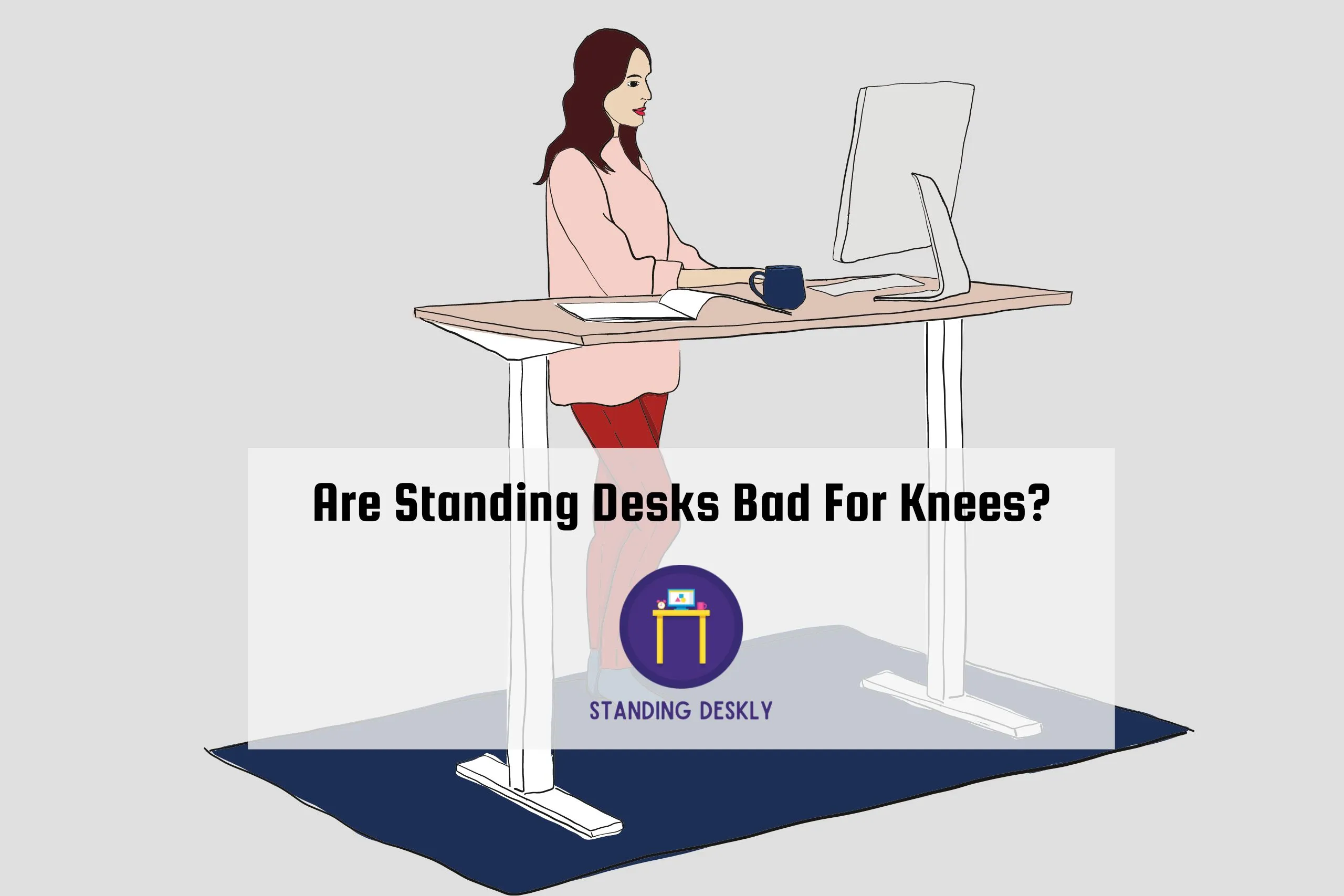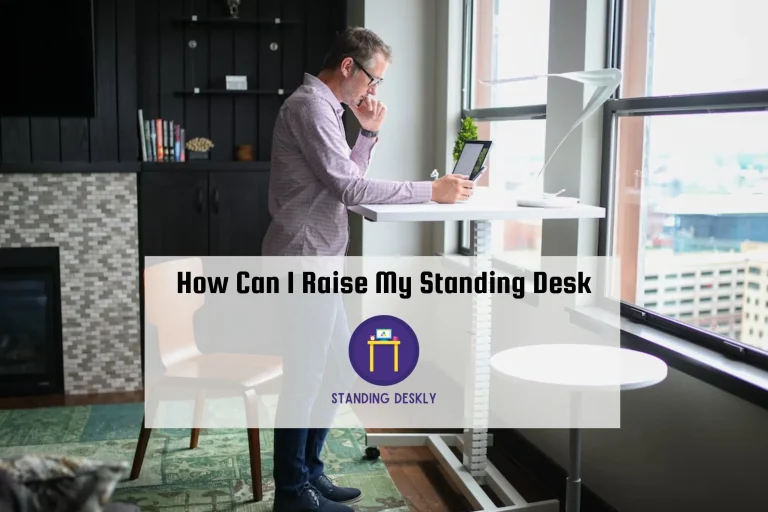Are Standing Desks Bad For Knees?
Contrary to popular belief, standing desks aren’t necessarily bad for the knees. In fact, there is no scientific evidence that suggests they are harmful in any way. The idea that standing desks could be bad for knees may have been derived from the assumption that standing all day long can be tiring on the feet and legs, which it certainly can, but that doesn’t mean it’s damaging your joints.
Rather than being a detriment to knee health, research has actually found that using a standing desk or alternate workstation can help improve posture and reduce pressure on the lower back when done correctly.
Furthermore, with increased blood flow comes an improved state of mental clarity and alertness; so if you’re having trouble staying focused or feeling sluggish at work, switching to a standing desk might just be what you need!
Knee Health Considerations
When it comes to knee health and standing desks, there are a few important considerations.
First, if you already have an existing injury or condition that impacts your knees, you should consult with a medical professional before attempting to use a standing desk.
It is also important to assess the type of surface on which you will be using the desk. Standing on hard surfaces for prolonged periods of time can lead to increased joint stress and discomfort. If possible, invest in a standing mat or cushion to reduce any potential strain on your joints.
When using a standing desk, also ensure that your posture is correct. Having good posture when working with a standing desk can help reduce the pressure placed on your knees and lower back muscles.
Make sure to keep your core engaged and maintain an upright position with your feet hip-width apart and aligned beneath your shoulders. Avoid locking your knees while standing at the desk as this can cause tightness in the surrounding muscles and increased strain on the joints.
Finally, it is important to move around throughout the day and take breaks from standing at the desk. When sitting down, make sure you are in an ergonomically friendly position that does not put too much pressure on the joints and muscles of your lower body.
Additionally, incorporating exercises like stretching throughout the day can help relieve tension in areas such as the hips, glutes, quads, hamstrings, calves and ankles – all of which are connected to healthy knee functioning!
Desk Set-Up Tips & Guidelines
Having the right desk set-up is key to avoiding knee pain and maintaining healthy knees while standing.
Before buying a standing desk, it’s important to consider the height of your desk, the area of standing space you need, as well as ergonomic features that will make working at your desk comfortable.
When choosing a standing desk, look for something that allows you to adjust the height so that your elbows are at about 90 degrees when typing and your wrists remain in line with your forearms. It’s important to find a position where you can comfortably type without having to reach or strain yourself.
You should also make sure there is enough room for your feet and legs underneath the desk so you don’t feel cramped or uncomfortable. If possible, use an anti-fatigue mat to place in front of your desk; this will help reduce stress on your feet, ankles and knees.
Lastly, if possible, use accessories like adjustable footrests or stools which can help increase comfort while standing and reduce pressure on your knees. Keeping your eyes level with the monitor and adjust it accordingly is also important; if necessary, use risers under either side of the monitor screen to ensure correct posture while working.
Exercise & Stretching: Prevention Strategies
Exercising and stretching are important activities to practice when using a standing desk, as they can help prevent knee pain and other issues that may arise from prolonged standing. Regular exercise helps strengthen the muscles around your knees, which can help reduce pressure on the joint and keep it stable.
Stretching is also important to keep those muscles flexible and reduce tension in the legs.
When performing exercises specifically targeting your knees, it’s important to focus on strengthening your quadriceps, hamstrings, and calf muscles.
Squats, lunges, and leg extensions are all great exercises designed to strengthen these areas.
Additionally, adding balance work into your routine is a great way to further engage these muscles and give yourself more stability when standing at your desk for extended periods of time.
By incorporating regular exercise and stretching into your daily routine you can drastically reduce any potential issues that may arise from using a standing desk for extended periods of time.
It’s also important to take breaks throughout the day both sitting and standing – switching positions regularly is necessary for proper circulation throughout your body!
Is Standing Or Sitting Better For Knee Pain?
Knee pain is an all too common and often debilitating condition that affects millions of people worldwide. When it comes to deciding if standing or sitting is better for knee pain, studies have found that there is no definitive answer. It ultimately depends on the individual and their specific needs.
For some people, standing may offer a significant reduction in knee pain when compared to sitting, as it can help keep the joints more active and promote better circulation throughout the body. Studies have also found that standing desks can help improve posture, which can lead to reduced stress and strain on the knees.
On the other hand, sitting may be beneficial for those with chronic knee pain due to arthritis or other conditions. Sitting allows for more rest and relaxation of the muscles surrounding the joints, which can ease discomfort associated with knee pain.
Additionally, sitting at a desk with an ergonomic chair can provide optimal support and comfort while working or studying.
Ultimately, the best way to determine what works best for you is through trial and error. If you find yourself suffering from knee pain when standing at your desk, it might be worth switching to a seated position for prolonged periods of time or investing in an ergonomic chair that offers additional support for your lower back and legs.
Similarly, if you find yourself becoming restless while seated for too long, standing up every now and then may provide relief from any soreness or stiffness in your knees.
Are Standing Desks Bad For Legs?
Standing desks have become more popular in recent years as people look for ways to reduce their sedentary work lifestyle. But with this rise in popularity, it’s important to consider the effects that standing desks have on our bodies, specifically our legs and knees. While standing desks can provide many benefits, research suggests that they come with some risks as well.
One of the main concerns is the effect on knee health. Standing for long periods of time puts a lot of pressure on your joints and can cause fatigue and stiffness. Without proper support, extended use of a standing desk can lead to joint pain and even injuries.
Studies suggest that certain ergonomic factors, such as desk height, the type of flooring used, etc., can influence how much strain a person’s knees take when using a standing desk. With an improper setup, users may experience chronic knee pain or other problems over time.
In addition to getting a good ergonomic setup, there are additional strategies you can use to help protect your knees while using a standing desk.
These include taking frequent breaks throughout the day and engaging in regular exercise or stretching activities that focus on strengthening and stretching your muscles around your knees and hips.
These strategies will help reduce the risk of injury from overexertion or simply from remaining stationary in one position for too long.
So while there are potential benefits associated with using a standing desk, it’s important to consider how it might affect your knee health before making any decisions about changing up your workspace. Use caution and make sure you set up your workspace properly to minimize any potential risks associated with prolonged use of a standing desk.
Final Verdict
When it comes to keeping your knees healthy, taking a few simple steps can make all the difference. First, set up your desk ergonomically and make sure you’re sitting or standing in an optimal position. Regular exercise and stretching can also help improve knee health.
Additionally, consider whether standing or sitting is better for any current knee pain you might be experiencing.
Ultimately, while standing desks may not be bad for your knees if used properly, listening to your body and making smart decisions about what works best for you is key to maintaining healthy knees.
Hey there!
I hope you’re enjoying the article you’re reading! I value your feedback and would love to hear your thoughts on how to improve it. If you have any suggestions, please feel free to send an email at editorial@standingdeskly.com along with the article URL.
Thank you for taking the time to help me improve my content. Your suggestions are greatly appreciated!

I’m the author and developer of Standingdeskly, the go-to site for standing desk enthusiasts. I provide comprehensive reviews of standing desks along with office setup tips. Combining years of research and personal experience, our goal is to make it easy for you to find the perfect standing desk tailored to your needs.







